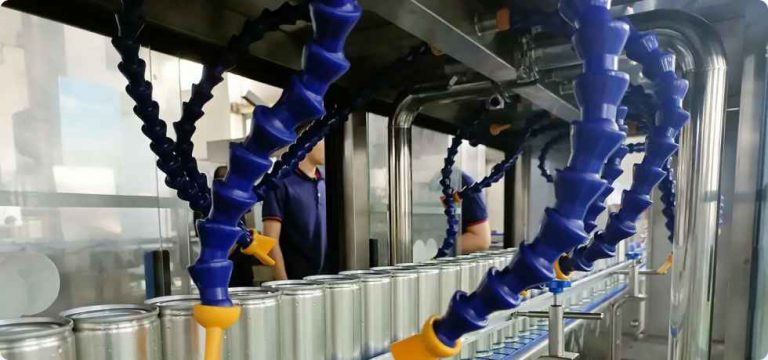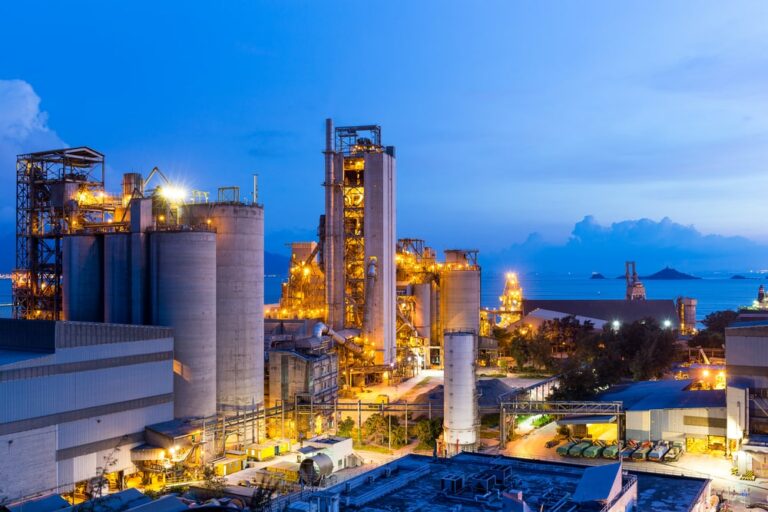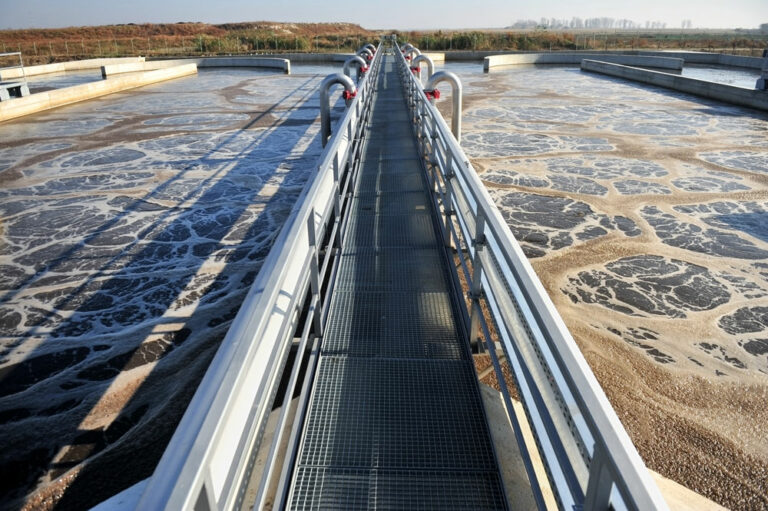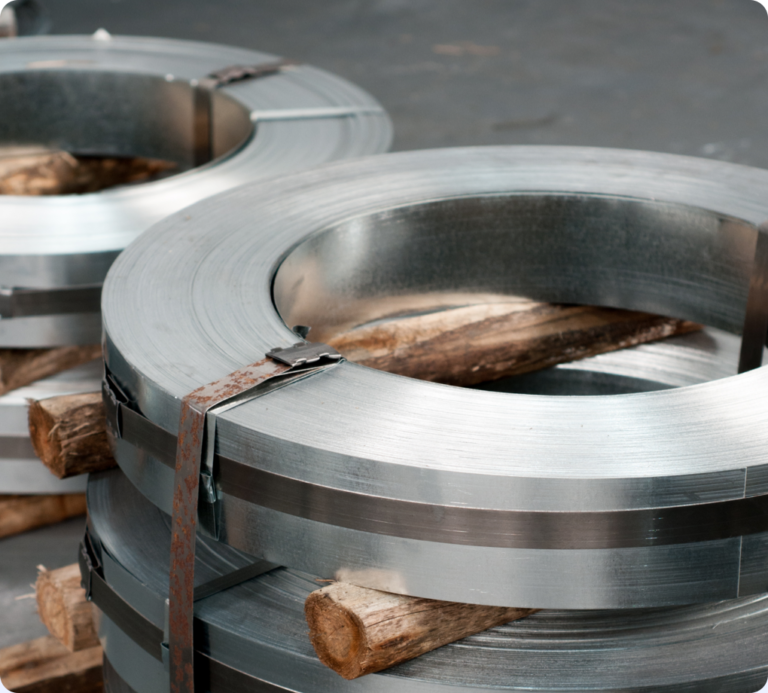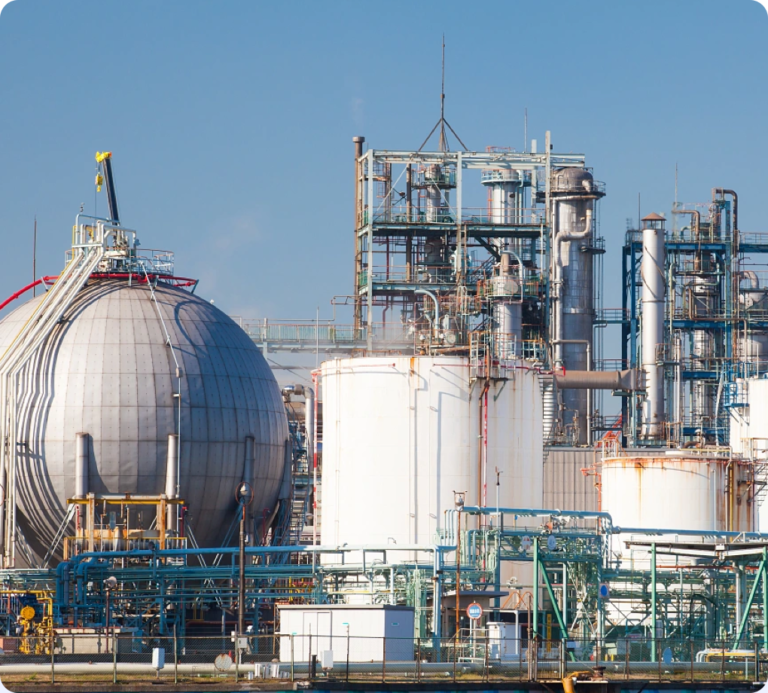Why centrifugal air suspension blower is suitable for stable and constantly running working conditions?
If we want to know the answer of this question,we need to know about the working principle of the air bearing blower:
1.the main parts of the air foil bearing blower is including:high speed permanent magnet synchronous motor,rotating shaft,air foil bearing,thrust bearing,ternary flow impeller,cooling impeller,VFD,PLC control system and other component.small air blower
2.When the centrifugal air bearing blower connects with the power,the motor will run from low speed to high speed.Since the motor is connecting with the rotating shaft,and shafting connects with the air foil bearing, air foil bearing connects with the ternary flow impeller.The VFD is used for controling the motor running speed.When the motor is running is the speed lower than 8000rpm,the shaft and air foil bearing is touching with each other(If there is connection, there will be friction).The design of the bearing life is start-stop 20,000times.After the motor running speed is more than 8000rpm,the air force surrounding the air foil bearing will counteract the bearing gravity,then the bearing will float and running surrounding the shaft.roots air blower
3.When the bearing of the air blower is running,it will bring the ternary flow impeller to run(since bearing is connecting with the impeller).After the ternary flow impeller runs,it will generate a vacuum area and suck the surrounding air into the ternary flow impeller,then the air will generate the dynamic pressure under the impeller compression,then the compressed air will be dischaged into the user pipeline.
4.When the shaft is rotating,it will bring the motor cooling impeller to run,the running impeller will form an vacuum area and suck the motor surrounding air inside.The air will go through the motor,bring the hot motor air to the vacuum area,then the hot air will be discharged outside the enclosure of the air blowers.
From the above working principle of air bearing blower,we can know that when we start-stop the blower,the air foil bearing has friction with the rotating shaft,when there is friction,there will be abrasion.Therefore,the air suspension blowers is not suitable for frequently start-stop working conditions.
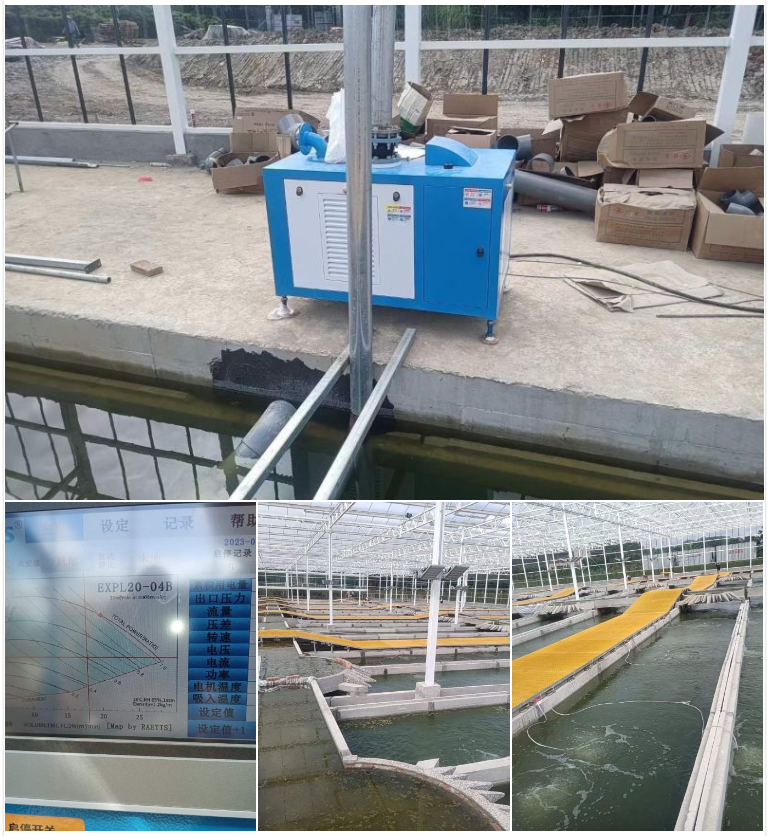
RAETTS high speed centrigal air blower,roots air blower
RAETTS miniature air foil bearing blower is designed for small sewage treatment plant,such as town STP,street WTP.These type of wastewater treatment plant has very small volume wastewater treatment capacity,only 500m3/day-1000m3/day.This type of small air bearing has the advantages such as compact size design,lower noise up to 65dB,easy installation and mainteance,small footprint.Many customers like to use air pressure blower to replace the heavy and loud noise roots blower.roots air blower
small air blower compact size,small footprint,lower noise no more than 75dB,easy maintenance
small air blower Product packing information:1pcs/package
RAETTS standard type air bearing blowers,roots air blower
Selection parameters table
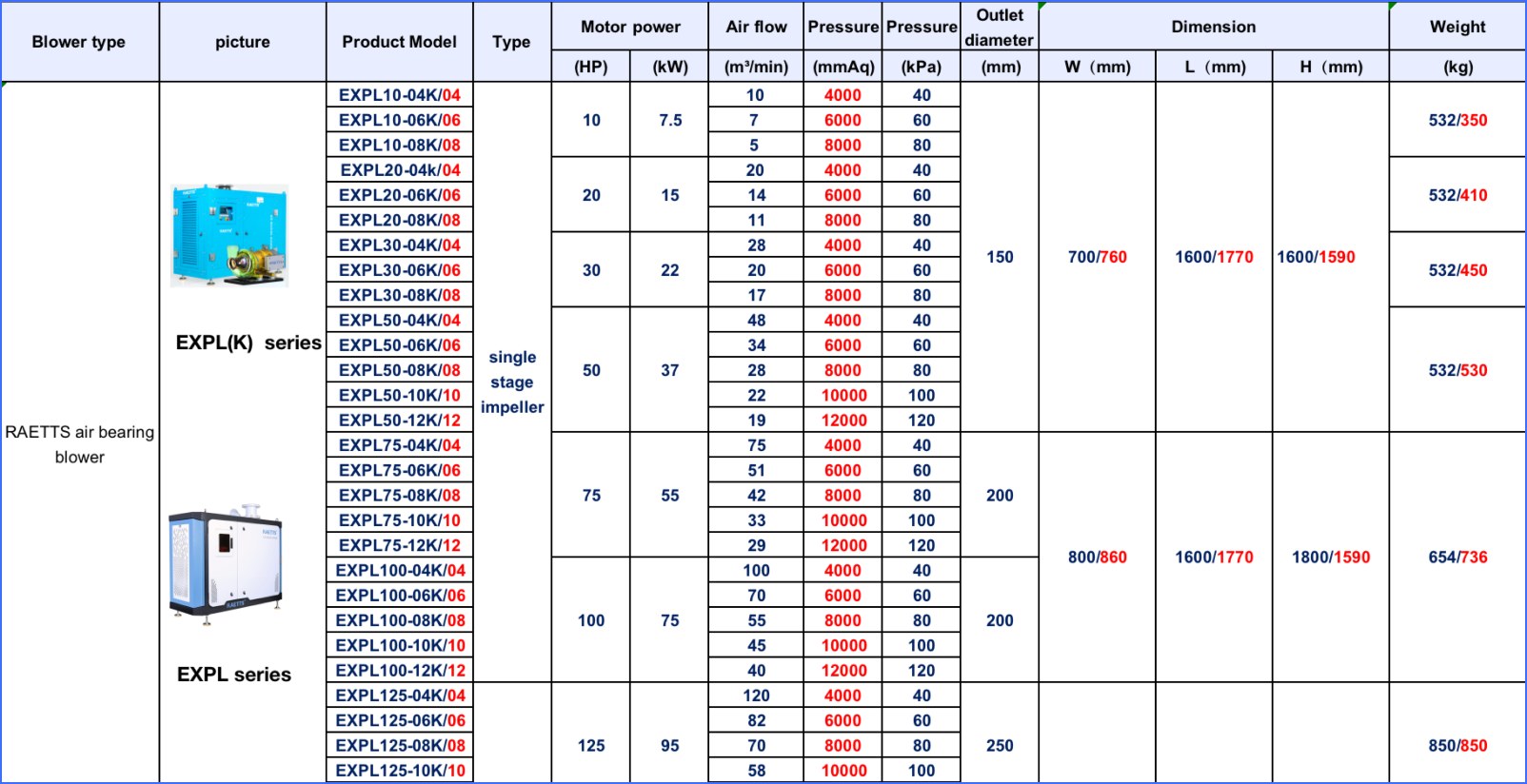
Air blower-An Ultimate FAQ Guide:
2.How has air blower technology evolved over time?
3.About the development history of small air blower factory
4.What are the maintenance requirements for an small air blower?
5.How long is the service life of an small air blower?
6.What Key Features Should You Look for in an Air Blower?
7.About small air blower warranty
8.What Are the Common Noise Levels Associated with Different small air blower Models?
9.About small air blower inventory
10.About small air blower delivery date
11.About small air blower production capacity
12.What are the common applications of an small air blower?
13.About small air blower overseas warehouse
14.About small air blower MOQ
15.About small air blower patent
16.What is the operating voltage of the air blower?
17.How to choose the right small air blower for your specific needs?
18.How to troubleshoot common issues with an air blower?
19.What are the different types of small air blower available in the market?
20.What are the advantages of using an turbo small air blower?
21.What is the operating temperature range of the air blower?
22.How to Properly Maintain and Extend the Lifespan of Your Air Blower?
23.About small air blower production equipment
24.About small air blower quality system
25.How does an small air blower work?
1.About small air blower R&D capabilities
RAETTS R&D team has more than 20 people,the chief team leader worked for BYD before,and the technique of whole team is supported by Xi’an Jiaotong University.
2.How has air blower technology evolved over time?
Air blower technology has evolved over time in many ways to make it more efficient, reliable, and cost-effective. Since the beginnings of air blower technology, blowers have become more tenacious and lighter due to the advent of composite materials and improved engineering techniques.
Initially, most air blowers were powered by combustion engines, typically gasoline or diesel. Despite their efficiency, combustion engines pose a number of potential safety hazards and may be expensive to run. Today, the majority of air blowers are powered by electric motors, sometimes referred to as “turbo” motors, which provide more power with greater energy efficiency.
As far as performance is concerned, most air blowers now feature variable-speed control, which allows users to adjust the airflow output to fit the requirements of the job. Variable-speed control not only makes air blowers more efficient but also reduces the amount of time needed for repairs and maintenance. Additionally, many air blowers today are manufactured with eco-friendly designs that help to reduce energy consumption.
To meet the needs of the commercial market, air blowers are now built with advanced features such as digital temperature control and pressure gauges. This allows users to precisely set the desired temperature and pressure for their applications, while other features like low-noise motors make them easier to operate in quiet environments.
Air blower technology continues to improve, and manufacturers are now putting out models capable of speeds up to 15,000 RPM. This high level of performance helps to increase the efficiency of an air blower’s airflow, resulting in a faster work rate and even greater energy savings.
Overall, air blower technology has seen tremendous improvement over the years, from combustion engines to digital temperature control and high-speed motors. These advancements have helped to bring air blowers into the modern age, offering users greater ease of use and energy efficiency.
3.About the development history of small air blower factory
RAETTS was set up in the year of 2011,the first product is super series high speed centrifugal blower(belt-drive type).The second product is developed in 2014,it is the direct-drive type high speed centrifugal blower,higher efficiency than belt-drive type.Both of this two blowers are used as the air source of the air knife drying systems.The air bearing blower was developed in 2018 and maglev turbo blower was developed in 2019.In 2020,we developed turbo compressor,which is to meet different applications which need higher pressure.
4.What are the maintenance requirements for an small air blower?
Different types of air blowers have different maintenance requirements,for traditional roots blower,end users need to add oil for lubrication,replace the ball bearing and change the air inlet filter periodically.But for turbo blower,the maintenance is quite easy and convenient,end users only need to change the air inlet filters 1-3 months.
5.How long is the service life of an small air blower?
The service life of an air blower can vary greatly depending on how it is used and maintained. Generally speaking, the life expectancy of an air blower can range from 10 to 20 years, but it can be extended significantly with proper maintenance.
One of the most important elements to ensuring the life of an air blower is proper installation. Before installation, it is important to consult with the manufacturer and ensure that the installation environment is adequate and not overly humid or dry. If the air blower is going to be exposed to any sort of corrosive or caustic atmosphere, additional measures such as protective coatings should be taken to reduce the potential for damage.
Regular maintenance is essential when it comes to air blowers. It is recommended that all filters be checked and changed every 6 months, and that any loosened mounting hardware should be re-torqued. Additionally, oil and grease should be applied to any moving parts to help reduce friction and extend its life.
The air blower should also be regularly inspected to ensure that the blades, bearings, and motors are undamaged and working properly. If any part of the air blower is not functioning correctly, it should be serviced immediately to ensure that it continues to operate efficiently and not risk any further damage to the machine.
Finally, it is important to note that the life of an air blower can be drastically reduced if it is misused or overworked. It is important to always use the blower within the limits recommended by the manufacturer to ensure that it has the proper service life. By following these recommendations, an air blower should last for at least 10 to 20 years, depending on the environment and how well it is maintained over time.
6.What Key Features Should You Look for in an Air Blower?
1. CFM: Make sure that the air blower you choose has the correct CFM (Cubic Feet per Minute) ratings to meet your needs.
2. Power: If you need to move air quickly and efficiently, look for an air blower with a higher power output.
3. Portability: If you need to take your air blower to different sites, choose one with built-in portability and handles.
4. Safety Features: Ensure the air blower has built-in safety features such as an automatic shut-off in case of overheating.
5. Price: Consider your budget when searching for an air blower as prices can range from a few dollars to several hundred.
7.About small air blower warranty
RAETTS warranty time for air bearing blower and maglev turbo blower is 24months,for high speed centrifugal blower is 12 months.
8.What Are the Common Noise Levels Associated with Different small air blower Models?
The noise levels associated with different air blower models depend largely on the size and operating speed of the blower. Smaller blowers tend to be quieter than larger ones. Generally, blowers with higher operating speeds will produce more noise than those running at lower speeds.
Centrifugal blowers tend to be the loudest of the three main types of air blowers. An air blower model with a 2-5 horsepower rating typically produces between 60 and 85 dB(A). Larger models with 5-10 horsepower ratings can usually produce between 75 and 100 dB(A).
Axial flow blowers are typically quieter, with an air blower model with a 2-5 horsepower rating usually producing between 50 and 75 dB(A). Models with 5-10 horsepower ratings usually produce between 65 and 90 dB(A).
Regenerative blowers are the quietest of the three main types of air blowers. An air blower model with a 2-5 horsepower rating usually produces between 45 and 70 dB(A). Models with 5-10 horsepower ratings usually produce between 55 and 85 dB(A).
It is important to note that noise levels associated with air blower models can vary significantly based on the design of the blower, the efficiency of the motor, and the environment in which it is operating. For instance, more efficient motors tend to generate less noise, and the noise levels generated by a blower can increase when it is operated in an environment with poor ventilation.
9.About small air blower inventory
For air bearing blower and maglev turbo blower,RAETTS doesn’t make stock,only produce air blower according to customers order(since different application site may need different designs).For high speed centrifugal blower,RAETTS makes stock.
10.About small air blower delivery date
For the regular model air blowers(air suspension blower and maglev turbo blower) which RAETTS is producing,the common delivery time will be 30-40 days.For Super air blower and EXPLORER series high speed centrifugal air blower,delivery date is about 10 days.For some other R&D products,RAETTS delivery data is about 3-4 months.
11.About small air blower production capacity
RAETTS production quantity for air bearing blower and maglev turbo blower is about 200pcs/month,for high speed centrifugal blower is about 700pcs/month.
12.What are the common applications of an small air blower?
The air blower can be applied for wastewater treatment aeration,pneumatic conveying,sandblaster,combustion support,galvanization,air knife drying,aquaculture oxygenation,fish farming,etc.
13.About small air blower overseas warehouse
RAETTS is cooperating with global distributors,some distributors has stock or sample in their warehouse.For now,RAETTS has Germany factory warehouse,and we are building the USA warehouse.
14.About small air blower MOQ
Normally our MOQ for air blower is 1 set
15.About small air blower patent
RAETTS won 5 Patents for invention, 18 Patents for utility models,3 Design patents +2 software copyrights,Dozens of patents under application,and formulated 1 Industrial standard and 2 Technical standards.
16.What is the operating voltage of the air blower?
The operating voltage of an air blower typically depends on its size and power output. Most air blowers are designed to run on either 110V or 220V AC power. For example, a larger blower with more power may require a 220V power source while a smaller blower with less power may only need 110V. Additionally, it is important to note that many air blowers have both 110V and 220V models, and the user should choose the right model to match the existing power infrastructure of the given application.
17.How to choose the right small air blower for your specific needs?
General speaking,we will do model selection of air blower according to customer’s required air flow,air pressure,application,installation altitude,suction media.
18.How to troubleshoot common issues with an air blower?
1. Check the power supply: Make sure the proper voltage is being supplied to the air blower and that any wiring is properly connected and secure.
2. Check the air filters: Check the filters inside the blower for any dirt or debris that may be blocking air flow. If the filters are dirty, clean them with compressed air or a soft brush.
3. Inspect the fan: Check the fan blades for any damage or distortion which could be causing sub-optimal performance and possibly even noise. If the blades are damaged, replace them with new ones.
4. Check the exhaust port: Check the exhaust port for any blockages that could be restricting airflow.
5. Run a diagnostic test: If the air blower isn’t working correctly, try running a diagnostic test to identify any potential errors. Depending on the model of the machine, this may be done with a computer diagnostic tool or a battery or electric screwdriver.
6. Lubricate the air blower: If the blower is not getting any air flow, check the motor to ensure that it is lubricated properly.
7. Inspect the belts: Check the belts that drive the blower to be sure that they are tight and not worn or frayed.
19.What are the different types of small air blower available in the market?
For the industrial air blower,normally it is including side channel blower(also called ring blower),roots blower(also called lobe blower),single-stage centrifugal blower,multi-stage centrifugal blower,air foil bearing blowers and maglev turbo blowers.
20.What are the advantages of using an turbo small air blower?
Comparing with tradition roots blowers,single-stage blowers and multi-stage blowers,turbo blowers effciency is 20%-30% higher,which means using an turbo air blower can help customer to save about 20-30% energy,and then reduce the eletric cost.
21.What is the operating temperature range of the air blower?
The operating temperature range of an air blower varies depending on the type and size of the blower. Generally, air blowers can operate at temperatures ranging from 40°F (4.4°C) to 250°F (121°C).
Smaller air blowers, such as those found in computers and electronic systems, operate within a much smaller temperature range. These systems typically run between 0°F and 140°F (-17.7°C and 60°C).
Large air blowers, such as those used in industrial or commercial settings, have a much wider operating temperature range. These systems can handle temperatures up to 500°F (260°C). At these temperatures, it is critical to monitor both the air blower and the actual output to ensure the system is not overworking or underperforming.
When designing an air blower system, it is important to select components that are rated for the particular operating temperature ranges. Components made out of materials that can withstand high temperatures, such as nickel-plated brass or stainless steel, are typically best suited for long-term use.
Since air blowers are intended for use in various temperature extremes, it is important to account for any potential changes during operation. Increases in air temperature can lead to decreased performance, while decreases in air temperature can result in decreased output.
Furthermore, all air blowers should be operated within a safe range of temperature to avoid any potential damage to the blower or the surrounding environment. For this reason, regular monitoring of the system should always be conducted to ensure the health and safety of everyone involved.
22.How to Properly Maintain and Extend the Lifespan of Your Air Blower?
Your air blower is an important machine that helps regulate the air you take in and the quality of air your environment receives. Properly keeping it functioning properly will not only help extend its lifespan significantly but also the useful life of other equipment around it. To help properly maintain your air blower and increase its longevity, follow these tips:
1. Clean the Intake.
Regularly check the intake filter and clean it using a damp cloth or vacuum cleaner. This will help ensure that dust and particles don’t build up and clog the engine.
2. Check for Foreign Objects.
Periodically check for any foreign objects inside and around the air blower. This can help you avoid any mishaps and keep your machine running smoothly.
3. Inspect the Interior.
It is important to occasionally disassemble the air blower and inspect the interior for any broken or worn-out parts. This will help you detect any potential problems and allow you to repair them before they can affect the machine’s performance.
4. Regularly Maintain and Service.
Regularly service and maintain your air blower by making sure all lubricants and fluids are replenished and parts are replaced if needed. This will ensure that all parts are functioning as they should, helping keep the machine working at its peak performance.
By following these steps, you can help ensure your air blower runs properly and prevent any potential problems that may lead to it needing replacement or repairs sooner than it should. With regular maintenance and care, your air blower can be in tip-top condition and have a longer lifespan.
23.About small air blower production equipment
RAETTS production equipments are including:Germany imported HERMLE five-axis processing center,AFMING five-axis processing center,Japan Mazak CNC machine tool,sheet metal production and processing center,JIR fine CNC processing center,LEADMA CNC processing center,DOOSAN CNC machine tool,test center,accembly center,motor production center,MAKE laser cutting machine,LFK bending machine,Sweden HEXAGON three coordinate inspection instrument and so on.
24.About small air blower quality system
RAETTS has quality management system certificate ISO9001:2015 and enviromental management system certificate ISO14001:2015.
25.How does an small air blower work?
The main structure of the air blower is including motor,shaft,bearing and impeller.When the motor is running,it will drive the shaft to run,then shaft drive bearing to run,then bearing drive the impeller to run.After the impeller runs,it will generate a vacuum area surrounding the impeller and suck the surrounding air inside.Then the air will be compressed by the impeller and discharged outside.
Tag:roots air blower

